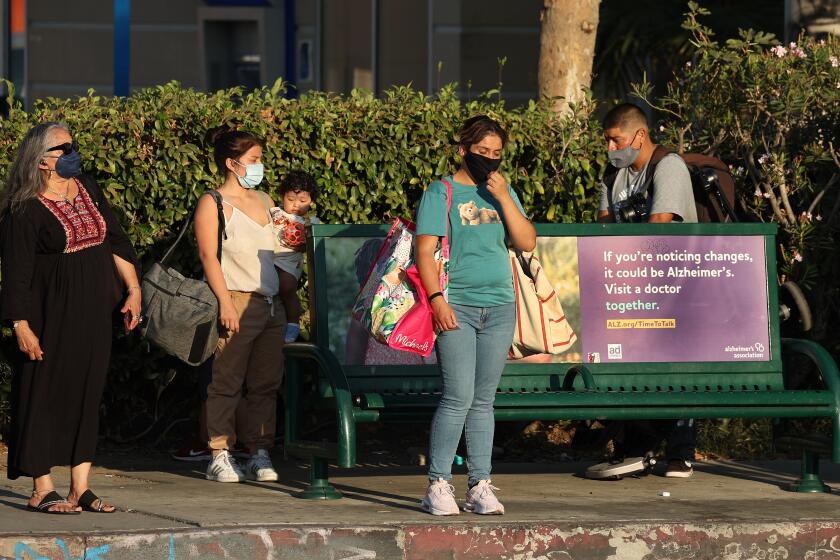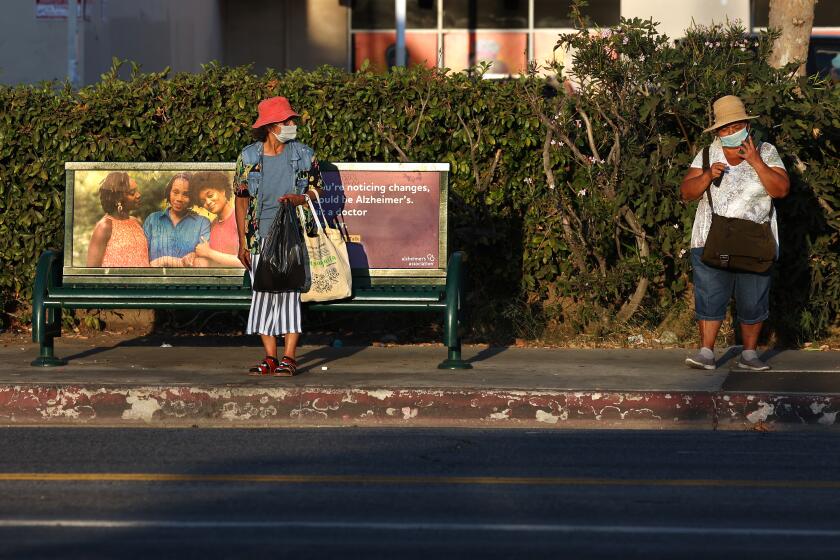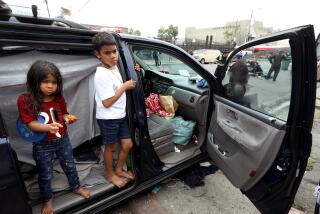In Koreatown, a lack of bus shelters makes a hot summer even hotter
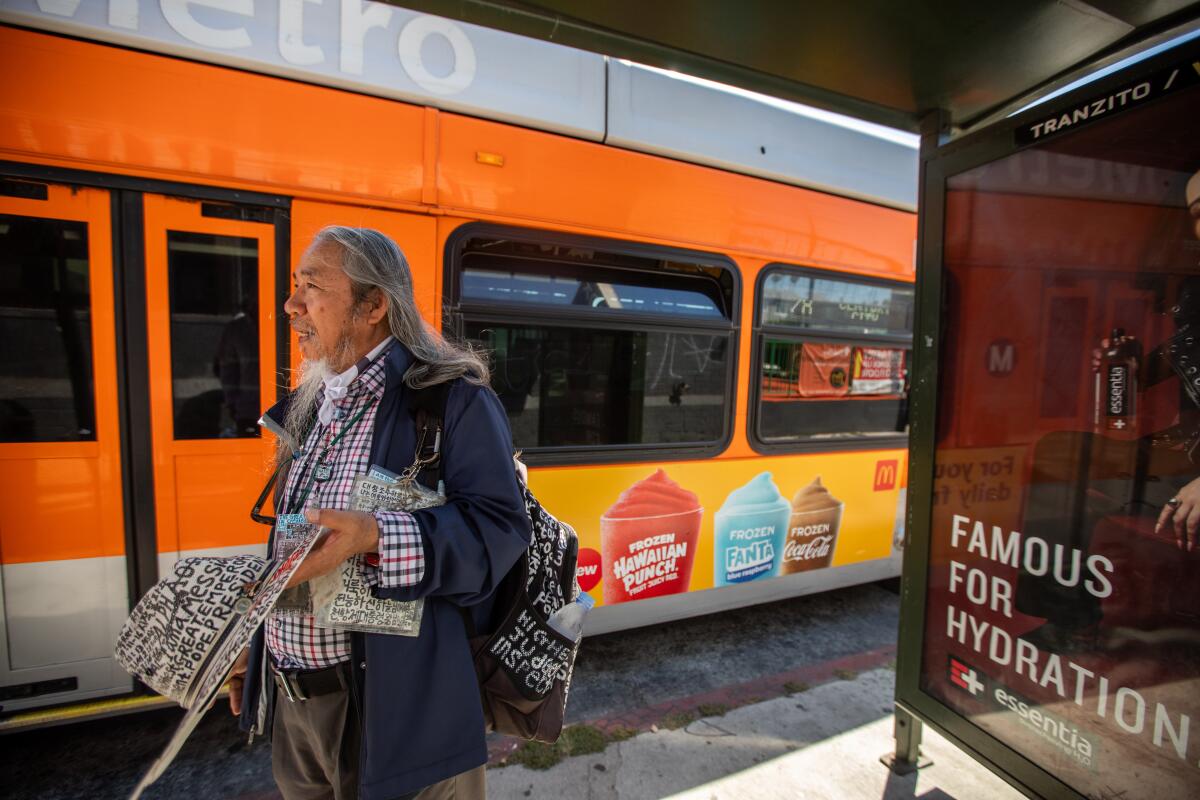
- Share via
On a hot August afternoon, Teddy Hwang ducked behind a light pole for the little shade it offered as he waited for a bus in Koreatown.
Hwang, 71, has failing eyesight and rarely drives. He relies on public transportation to get to Korean grocery stores, friends and a part-time job as a security guard.
Hwang, who was heading home after visiting a friend, said he was “driven crazy” by the 90-degree heat and the long wait.
“I’m so frustrated,” said Hwang, who lives in the neighborhood and immigrated to the U.S. decades ago. “I have nothing to do but to wait.”
Hwang’s bus ended up being 20 minutes late.
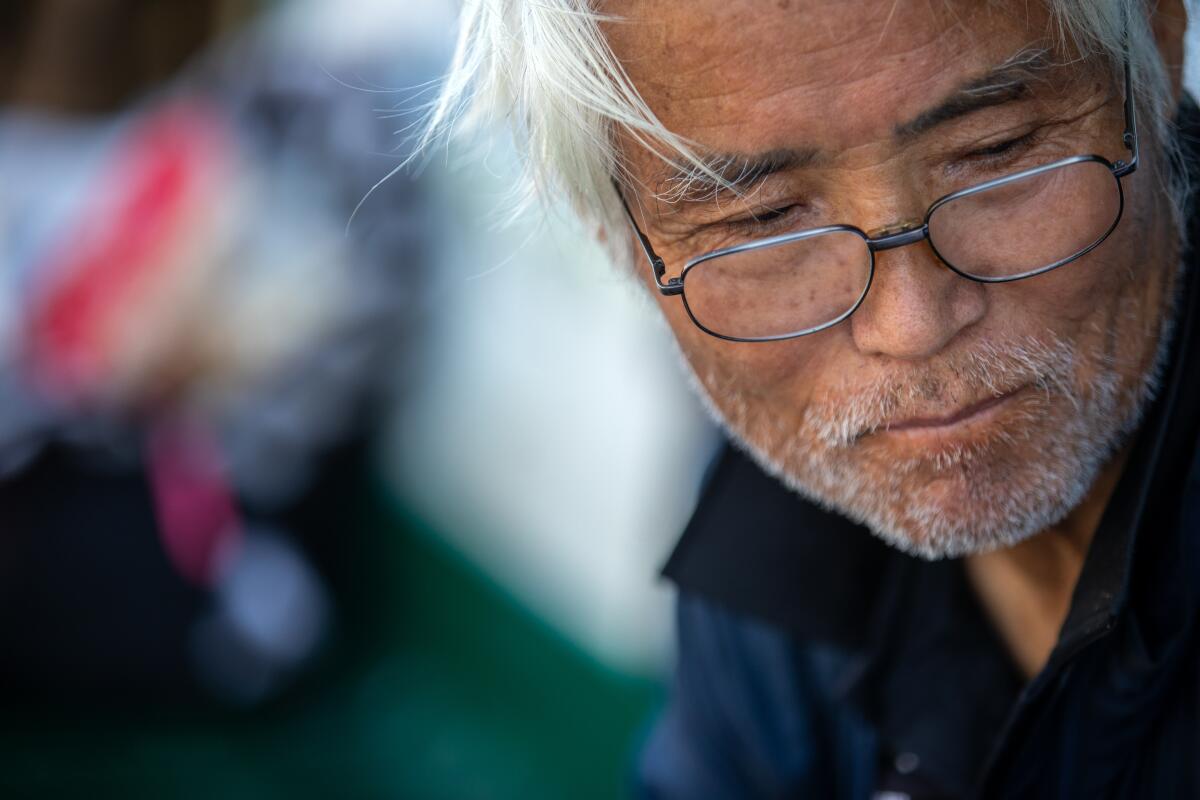
For many older Korean immigrants, buses are a lifeline. Some live in the suburbs and endure long rides with multiple transfers to take classes at senior centers, meet up with friends or go shopping in Koreatown. Others who are local residents rely on buses to get around the densely packed neighborhood, where the language barrier vanishes and they can find any Korean dish they crave.
It’s not just the infrequency and unreliability of the buses. Most bus stops in Koreatown — and throughout Los Angeles — have no benches or shade.
Thousands of Metro bus stops have no shelter or even a seat. But a proposal to bring new shelters to Los Angeles with digital ads is raising doubts.
L.A.’s dry heat pales in comparison to Seoul’s humidity. But it seems to be getting hotter every year. For an older person standing on a concrete sidewalk, the summer sun quickly becomes debilitating.
“In Seoul, every bus stop has a roof,” said Kwanil Park, executive director of the Koreatown Senior and Community Center. “Here, it’s crazy that shade consists of a stick. We need roofs and benches. Everywhere in Seoul has that.”
Sometimes, senior citizens arrive at the center looking like they are about to faint, Park said.
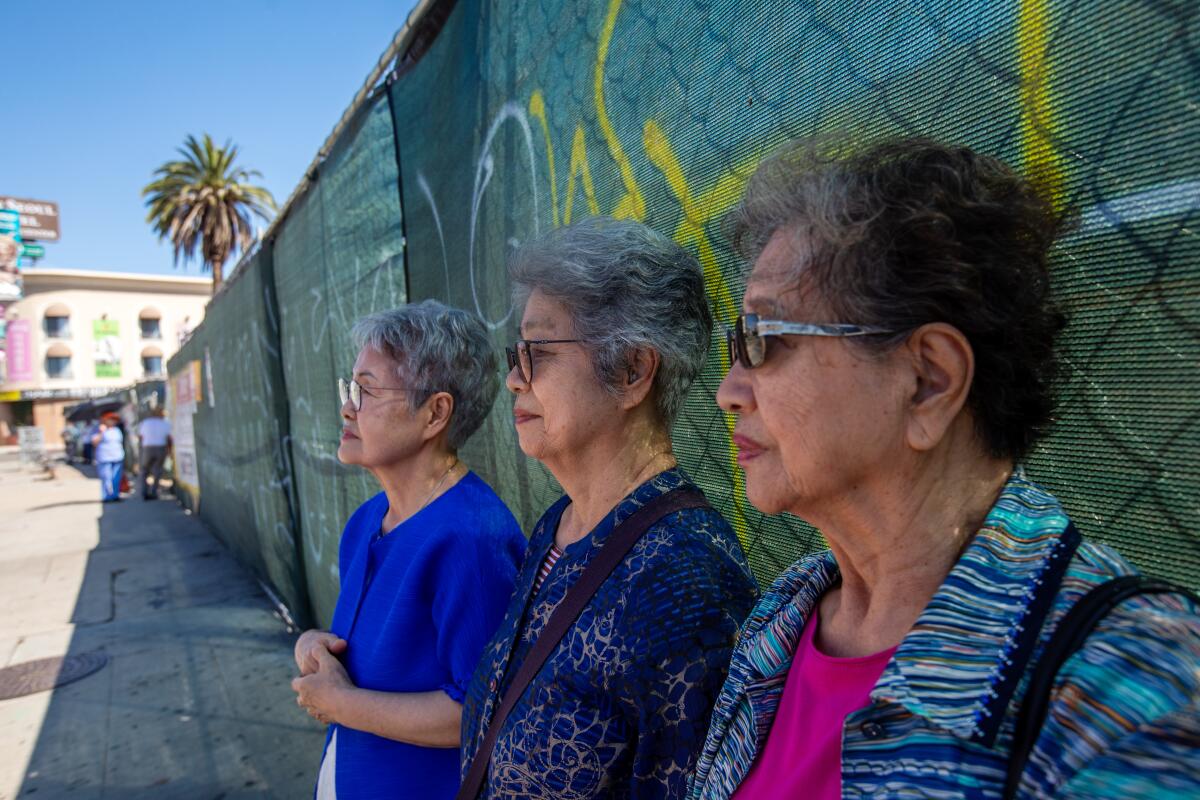
Last August, about 100 Korean elders packed the center’s main meeting room and vented their frustrations to officials from the Los Angeles County Metropolitan Transportation Authority.
Ellie Yoo, now a senior at Immaculate Heart High, had worked with Park, also enlisting her friends, to survey bus stops around Koreatown.
They wrote to officials, demanding that Metro increase bus service along Olympic Boulevard and address wait times for seniors at “scorching” bus stops.
Metro officials then agreed to the meeting at the senior center.
About a month later, the City Council approved a contract allowing a company to advertise on hundreds of bus shelters in exchange for installing and maintaining 3,000 such structures.
What should be a simple, basic amenity of bus service – a bench to sit on and some shade while waiting – is still a rarity in most areas of the region.
But the shelters have yet to materialize, and bureaucratic issues have delayed the funding. The city’s public works department said in a written statement that it expects the first set of shelters to be installed in early 2024.
The money for the shelters, which will come from a loan from the city’s trust fund, is still being reviewed, the statement said.

Korean immigrants — about 1,000 a week — journey to the senior center on Olympic Boulevard and Normandie Avenue to take classes ranging from origami to using smartphones to text with grandchildren and watch Korean dramas.
Seats are so in demand that people line up at dawn to register each quarter. The center is a rare gathering place in a neighborhood so park-poor that a McDonald’s has long served as a senior hangout spot.
On a recent day, Joon Ja Kim was at the senior center for a 30-minute one-on-one coaching session on her new Galaxy smartphone, learning how to recover lost contacts and video chat with friends and grandchildren.
From her Gardena home, she takes three buses to get to the center — an hour-and-a-half-long trek. A few years ago, she fell ill after waiting half an hour without shade for a bus.
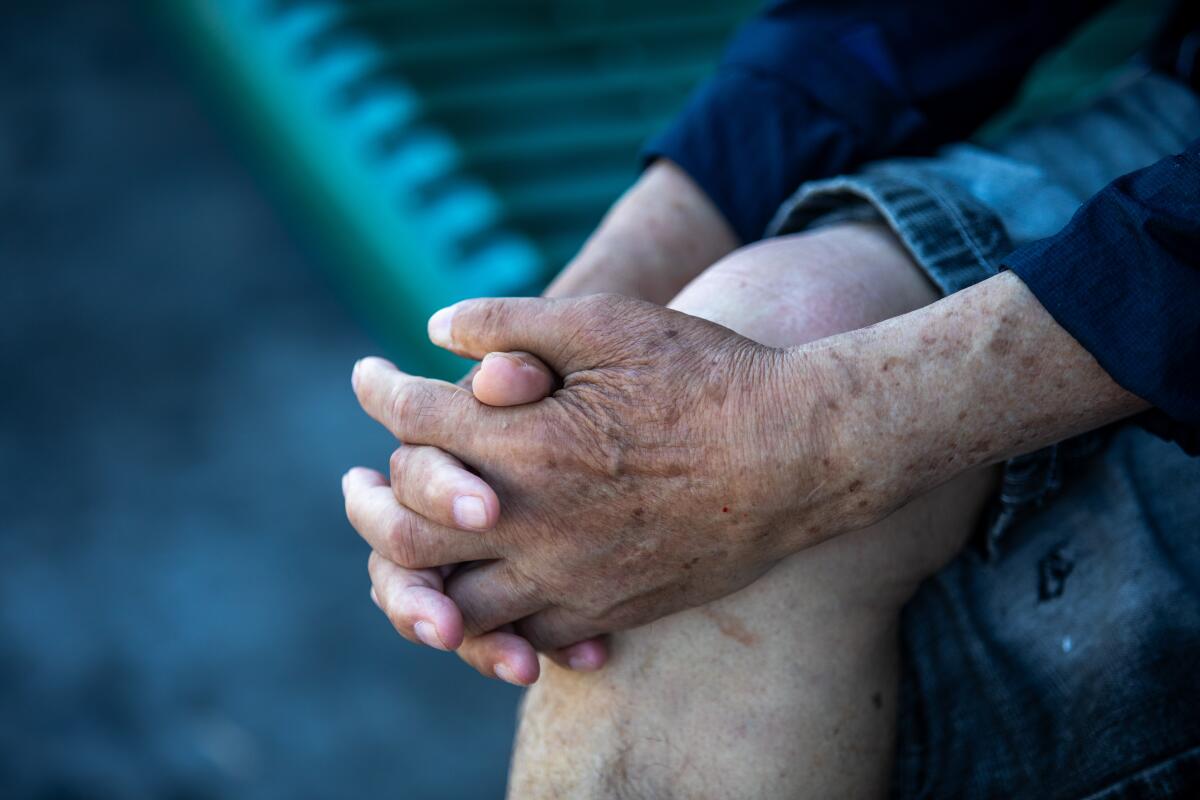
“I had to spend days in bed,” said Kim, 78, who immigrated to the U.S. in 1986 and ran a clothing business before becoming a homemaker and raising her children.
Greg Choi volunteers at the center’s front desk, measuring seniors’ temperatures and checking them in for classes. He takes smartphone and English classes and often meets friends at the center.
“The place gives me vigor,” he said.
Choi, 77, who lives in a senior apartment in East Hollywood 20 minutes to the north, has been coming to the center twice a week for a decade. Waiting for the bus takes a toll.
“I have to worry about not falling to heat exhaustion,” he said.
In an age of increased isolation and loneliness, some Americans see skipping self-checkout as a path toward connection.
Jasey Kim Son’s Mid-City home is a five-minute bus ride from Koreatown. At his age, it’s too far to walk, and he recently stopped driving.
That’s five minutes on the bus itself. Including wait time, the trip is often much longer.
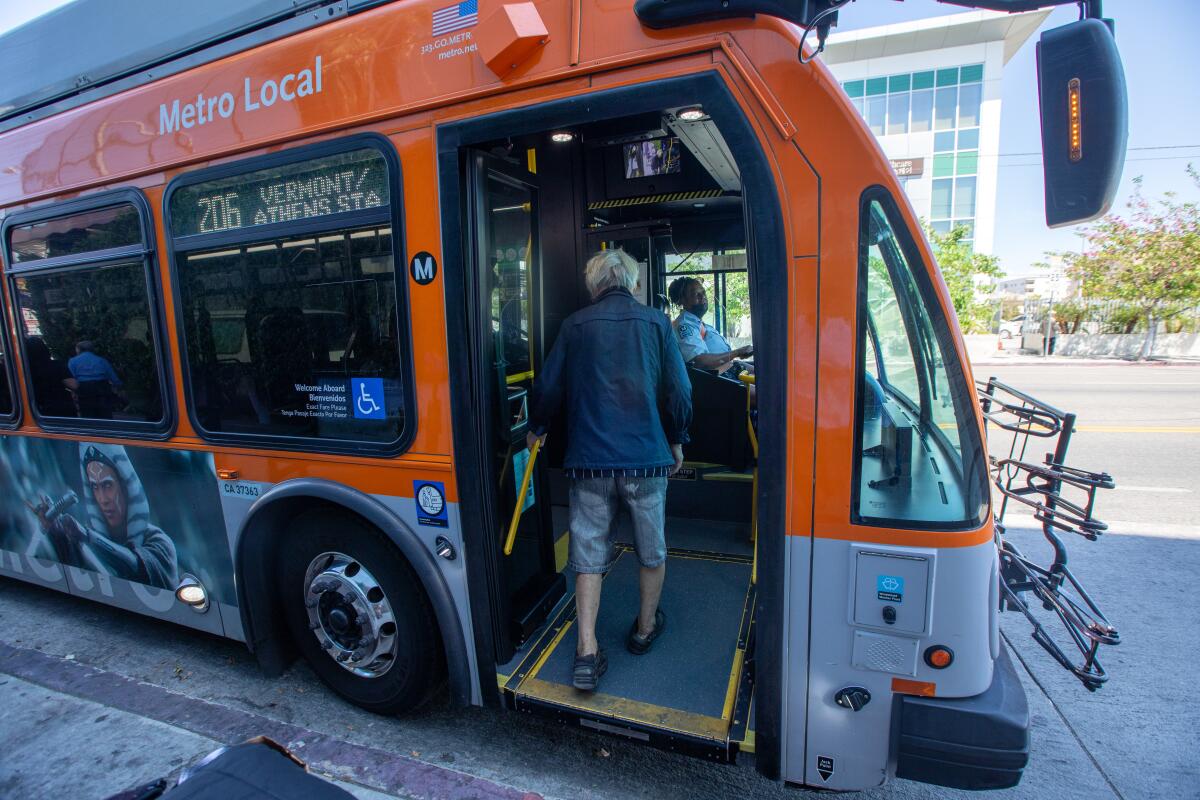
Son, 78, who came to the U.S. from Korea 40 years ago, has given up his hobby of watching Korean films at a neighborhood multiplex, because it sometimes takes two hours to get there and back.
As he waited for the bus on a recent afternoon at Olympic and Normandie after having lunch in Koreatown, the shadow cast by a neighboring building provided the only shade.
Son lives alone. He hasn’t figured out how to fill the days.
“I’ve lost my flow of life,” he said.
More to Read
Sign up for Essential California
The most important California stories and recommendations in your inbox every morning.
You may occasionally receive promotional content from the Los Angeles Times.

